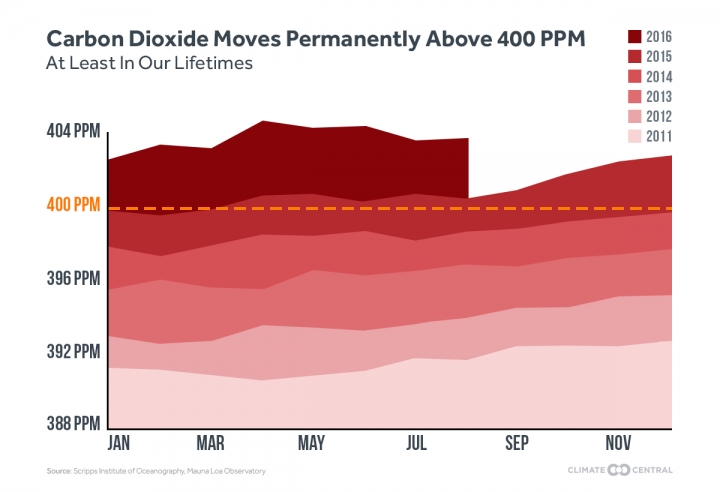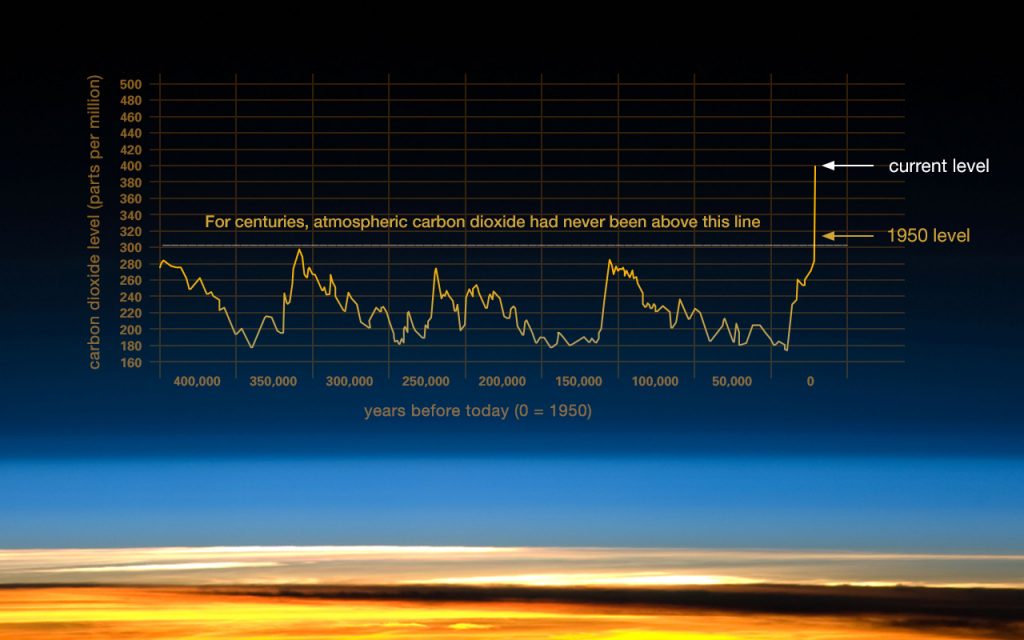If you’ve been paying attention to non-election news, you may have heard that recently scientists measured carbon dioxide (CO2) levels in our atmosphere above 400 parts per million (ppm) at the Mauna Loa Observatory in Hawaii. So what?
When I started New England Clean Energy, I was also presenting for Al Gore. Gore had organized the “Climate Project” and trained me, along with a thousand of his other best friends, to deliver the presentation he gave in his movie “An Inconvenient Truth”.
The primary thrust of this presentation was that man was (is) changing our planet’s climate by dumping greenhouse gases like CO2 into the atmosphere.
In 2006, when I did more than 30 presentations, I learned that the CO2 level in the atmosphere cycles greatly during the year. When plants are growing, they absorb CO2. Most vegetation is in the northern hemisphere. Therefore, CO2 concentrations are lowest after a full growing season, i.e. early fall in the northern hemisphere.
But in September 2016, the Mauna Loa Observatory announced atmospheric CO2 of 401 ppm. Compare that to the 2006 low point of approximately 380 ppm. That’s a 5.5% increase in 10 years.
So what?
The science is clear. The earth’s temperature increase is caused by the increased concentration of CO2 (and other greenhouse gases) in the atmosphere. We are witnessing the effects of a warmer planet. Low-lying communities like Miami are regularly experiencing “sunny day” flooding due to the rise in sea level from the melting ice caps. Coral reefs, like the Great Barrier Reef, are dying because of “bleaching”, a phenomenon caused by higher water temperatures.
How does solar help?
Each solar array installed generates a bit of electricity without burning fossil fuel – the largest source of greenhouse gases. (Nationally, each kilowatt-hour generated by solar electricity prevents on average 1.5 pounds of CO2 being released into the atmosphere. In New England, it’s slightly higher.)
Cynics say a home solar system barely makes a dent, so why bother going solar? My response is simple. Instead of being part of the problem, be part of the solution. In my own life, I do what I can to reduce my carbon footprint: recycling, hybrid cars, high efficiency furnaces, extra insulation, solar hot water system, solar electric system.
Am I trying? Yes. Can I do more? Probably. Is it enough? Maybe not.
But what’s the alternative?
If you liked this article, you might also enjoy:







No comments yet. You should be kind and add one!
The comments are closed.